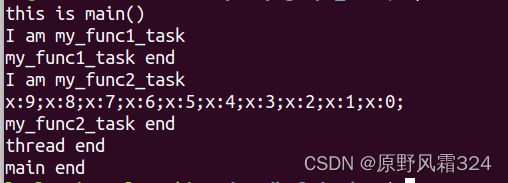- Java Comparable之应用技巧
jianaio
java开发语言
Comparable接口的基本概念Java中的Comparable接口位于java.lang包中,主要用于定义对象的自然排序规则。该接口仅包含一个方法compareTo(),实现该接口的类需要重写该方法以提供对象之间的比较逻辑。publicinterfaceComparable{intcompareTo(To);}实现Comparable接口的步骤定义一个类并实现Comparable接口,重写co
- uni-app使用web-view组件APP实现返回上一页
极客编程坊
WEB前端uni-app前端
一、功能概述本案例实现了在Uniapp中内嵌H5网页并深度控制的三项核心功能:隐藏指定特征的内链元素自定义导航栏返回逻辑Webview原生特性保留二、代码解析2.1基础结构webview-styles:控制原生Webview样式src:指定加载的H5页面地址2.2核心控制逻辑exportdefault{onReady(){constcurrentWebview=this.$scope.$getAp
- 个人笔记(linux/sort与uniq命令)
sort命令(排序)功能:行排序核心语法:sort[选项][文件]常用选项:选项作用示例-n数值排序sort-n-r降序排序sort-nr-k指定排序列sort-k2,2n-t指定分隔符sort-t':'-k3n-u去重(相当于uniq)sort-u典型用法:#按第二列数字降序排序sort-k2,2nrdata.txt#处理CSV文件(以逗号分隔)sort-t','-k3ndata.csv注意事项
- 【华为OD机试真题 2025C卷】161、 机器人可活动的最大网格点数目 | 机试真题+思路参考+代码解析(C++、Java、Py、C语言、JS)
KFickle
最新华为OD机试(C++JavaPyCJS)+OJ华为od机器人c++华为OD机试真题java机器人可活动的最大网格点数目c语言
文章目录一、题目题目描述输入输出样例1二、代码与思路参考C++代码Java代码Python代码C语言代码JS代码订阅本专栏后即可解锁在线OJ刷题权限个人博客首页:KFickle专栏介绍:最新的华为OD机试真题,使用C++,Java,Python,C语言,JS五种语言进行解答,每个题目都包含解题思路,五种语言的解法,每日持续更新中,订阅后支持开通在线OJ测试刷题!!!一次订阅永久享受更新,有代码问题
- MacBook电脑一键切换输入法工具,超好用!
macfortg
我们在日常使用MacBook电脑时,如果使用多种输入法的话,会显得比较麻烦和繁琐。那么自动切换输入法不仅可以帮我们使用快捷键进行切换,做到一键切换非常的便利和方便。而且在自动切换输入法中可以使用自动切换输入法的APP和网页对应式的输入法自动化的切换输入法,只要你设置好了之后,切换APP或者打开网页都能得到自己想要的输入法。1、设置快捷键,快速切换,省时省力!用户可以设置快捷键,指定输入法的切换。而
- 051-OpenCV GrabCut图像分割算法
话不多说,上代码,看结果。importcv2#导入库importnumpyasnp'''cv2.imread(filename,flags)#filename为文件名,图片与.py文件在一个文件夹时输入文件名即可#不在一个文件夹时输入图片的路径和名字#flags为图片的颜色类型,默认为1,灰度图像为0'''img=cv2.imread('89.jpg')mask=np.zeros(img.shap
- 某国产数据库“热情过头”的发布会,该收收了!
IT邦德
数据库国产数据库数据库
作者:IT邦德中国DBA联盟(ACDU)成员,15年DBA工作经验Oracle、PostgreSQLACECSDN博客专家及B站知名UP主,全网粉丝15万+擅长主流Oracle、MySQL、PG、高斯及Greenplum备份恢复,安装迁移,性能优化、故障应急处理文章目录01兼容性?02多模融合?03性能玄学?04智能运维?05终极暴击总结哥们儿,还记得十年前DBA圈那场著名论战不?OLTP和OLA
- pycharm回车、删除、方向键和快捷键等不能使用原因
解决方法:菜单栏中的Tools取消勾选VimEmulator原因:新版的pycharm安装中,默认安装了vim扩展,一旦安装了pycharm在编写代码时会默认使用Vim编辑器
- JS 柯里化 (Currying):函数参数的偏应用与函数复用
各位程序猿,大家好!我是你们今天下午的JS柯里化专题讲座讲师,叫我老王就行。今天咱们不搞虚的,直接上干货,聊聊JS里一个听起来高大上,用起来贼好使的技术——柯里化(Currying)。开场白:柯里化,你别怕,它真不难!很多人一听到“柯里化”三个字,就感觉像进了什么魔法学院,满眼都是咒语和符文,恨不得直接逃课。淡定!柯里化其实没那么可怕,它只是把一个接受多个参数的函数,变成一系列接受单个参数的函数。
- 高并发场景下的技术压测与问题排查:P7面试官考核并发优化方案
淳淳同学
Java面试场景题Java高并发压测GC性能优化
文章标题:“Java求职者面试:高并发场景下的技术压测与问题排查”Tag:Java,高并发,压测,GC,性能优化场景描述:面试官(张工):一位严肃且专业的Java面试官,专注于高并发和性能优化领域,对技术细节有着深刻的理解。小兰:一名年轻但略显紧张的Java程序员,面试前虽然做了准备,但在复杂问题上显得有些犹豫和含糊。第一轮提问:基础知识与高并发场景引入张工:小兰,你好,很高兴见到你。我们先从简单
- VirusKing整蛊代码:注销解决
DHY 专研C++病毒
c++windows病毒
一:简介这回的病毒玩狠了,360开始报毒了,系统给我卡崩溃了,所以可见它有多猛,病毒名:VirusKing防护系统:基于SuperVirus3.0的全屏防杀系统二:代码上代码:#include#include#include#includeusingnamespacestd;voidCanNotClose();voidFullScreen();voidInit();voidCanNotClose(
- 利用Windows .NET特性和Unicode规范化漏洞攻击DNN (DotNetNuke)
sechub
windows.netdnn
概述DNN(前身为DotNetNuke)是2003年建立的最古老的开源内容管理系统之一,使用C#(.NET)编写,由活跃的爱好者社区维护。它也被企业广泛使用。漏洞背景CVE-2017-9822历史案例我们熟悉这项技术是因为CVE-2017-9822,该漏洞允许通过DNNPersonalizationcookie的不安全反序列化进行远程代码执行(RCE)。这个CVE一直是反序列化攻击的绝佳案例研究。
- DeepSeekMath:突破开源语言模型在数学推理中的极限
AI专题精讲
强化学习人工智能强化学习AI技术应用
温馨提示:本篇文章已同步至"AI专题精讲"DeepSeekMath:突破开源语言模型在数学推理中的极限摘要数学推理由于其复杂且结构化的特性,对语言模型构成了重大挑战。本文介绍了DeepSeekMath7B,该模型在DeepSeek-Coder-Base-v1.57B的基础上继续进行了预训练,使用了来自CommonCrawl的120B数学相关token,同时包含自然语言和代码数据。DeepSeekM
- 备份11111
Ellie艾藜
前端
hospital:医疗小项目后台管理,React+axios+antdhttps://gitee.com/whiteshader/ruoyi-react/tree/spring-cloud-v3/#%E6%BC%94%E7%A4%BA%E5%9B%BE
- 卡罗林斯卡学院与华大等团队联合发表人类、猪、小鼠大脑中的蛋白编码基因图谱
尐尐呅
美国时间2020年3月5日,由卡罗林斯卡学院、瑞典皇家理工学院和华大等团队共同完成的一项题目为“人类、猪、小鼠大脑中的蛋白编码基因图谱”的研究发表于Science(影响因子41)。该研究基于多种转录组学方法和抗体图谱技术,对大脑不同区域进行了全面、深入的分子解析,并且提供了高质量的蛋白编码基因的分子图谱,为进一步研究提供了有力的武器。该研究成功地构建了哺乳动物大脑的基因图谱,是对现有的若干个大脑图
- MySQL 配置性能优化实操指南:分版本5.7和8.0适配方案
挑战者666888
mysql《Java面试精选》adbmysql性能优化服务器数据库linux运维
在MySQL性能优化中,不同版本的特性差异会直接影响优化效果。本文基于MySQL5.7和8.0两个主流版本,通过版本适配的配置代码、场景举例和通俗解释,让优化方案更精准落地。一、硬件与系统配置优化(基础层优化)1.服务器硬件选型实战建议CPU:高并发场景优先选多核CPU(如16核IntelXeon),但避免盲目堆核(MySQL5.7对超32核利用率下降明显,8.0有显著改进)。举例:电商秒杀服务器
- 告别手动引入!PHP自动加载终极指南,效率提升90%
Jay_MIng
phpandroid开发语言linuxnginxjavapython
在没有自动加载机制的前提下,想要使用不同文件的类时,需要逐个手动将文件引入才行require'classes/MyClass.php';//......$obj=newMyClass();这种情况会导致维护困难,随着项目扩大变得难以管理。因此自动加载是PHP中一种重要的机制。自动加载允许在首次使用类时动态加载类文件,而不需要手动包含每个类文件PHP中推荐使用spl_autoload_registe
- 分布式定时器:原理设计与技术挑战
你一身傲骨怎能输
架构设计分布式
文章摘要分布式定时器用于在分布式系统中可靠、准确地触发定时任务,常见实现方案包括:基于数据库/消息队列的定时扫描、分布式任务调度框架(如Quartz集群、xxl-job)、时间轮/延迟队列(如Redis/Kafka)以及Zookeeper/Etcd协调服务。主要技术挑战包括时钟同步、任务幂等、高可用、负载均衡和故障恢复等。核心难点在于保证任务唯一性、调度精度与分布式一致性,技术选型需权衡轻量级(R
- 接口压测:性能极限测试全解析
文章摘要接口压测是通过模拟高并发请求对API接口进行性能测试,评估其承载能力、响应速度和稳定性。核心内容包括并发访问、高频调用、参数多样性测试及异常场景验证,常用工具如JMeter、Locust等。关键指标包括QPS、响应时间、错误率等,需在接近生产环境测试并逐步加压,以发现性能瓶颈,确保系统在业务高峰期的可靠性。通过压测可优化接口性能,为系统扩容提供数据支撑。1.为什么要做接口压测?验证接口的最
- 常用 SQL 语句摘录
未来无限
C#Winform设计
语句功能--数据操作SELECT--从数据库表中检索数据行和列INSERT--向数据库表添加新数据行DELETE--从数据库表中删除数据行UPDATE--更新数据库表中的数据--数据定义CREATETABLE--创建一个数据库表DROPTABLE--从数据库中删除表ALTERTABLE--修改数据库表结构CREATEVIEW--创建一个视图DROPVIEW--从数据库中删除视图CREATEINDE
- 应用层流量与缓存累积延迟解析
你一身傲骨怎能输
计算机网络缓存
文章摘要应用层流量指OSI模型中应用层协议(如HTTP、gRPC)产生的数据交互,常见于Web请求、微服务通信等场景。缓存累积延迟指多级缓存或消息队列机制中,各级延迟叠加导致数据更新滞后,例如数据库更新后,因消息队列、缓存刷新等环节延迟,用户最终看到的数据可能滞后数秒。两者分别描述了网络通信的数据流机制和分布式系统中的延迟问题。1.应用层流量应用层流量,一般指的是在网络通信的OSI七层模型中,**
- 极限高并发压测:P7架构师与应届生的JVM调优对决
搞Java的小码农
Java面试场景题Java面试高并发性能优化JVM调优极限场景
文章标题:极限高并发压测:P7架构师与应届生的JVM调优对决场景描述在一个互联网大厂的终面环节,面试官决定通过模拟真实业务场景来考察候选人的技术深度和解决问题的能力。面试官是一位有着丰富经验的P7架构师,而候选人是刚刚毕业的应届生小兰,她擅长手写Tomcat并自认为对JVM有一定了解。面试的背景是一个极端的高并发场景,QPS从2000飙升至10万,同时伴随着内存泄漏问题和GC暂停时间的急剧增加。第
- UE5 官方案例Lyra 全特性详解 14.背包系统Inventory System3
CloudHu1989
ue5游戏程序c++
目录0.前言1.合成物品1.1物品数据1.2绘制装备合成1.3蓝图配置2.商店生成位置3.提示信息4.拖拽的图标0.前言接上一篇没有讲完的部分,首先把源码cloudhu/Lyra_Inventory公开给大家去克隆,源码中有很多不完善的地方大家可以放手去修改,后续讲的内容也会往这个仓库去推送.把这个仓库克隆到本地,然后生成VS代码,打开VS,然后编译代码,编译通过后,打开编辑器,如果地图不是Wor
- UE5网络联机函数
UE星空
UE蓝图ue5
FindSessionsCreateSessionJoinSessionDestroySessionSteam是p2p直接联机一、steam提供的测试用AppIdAppId是steam为每一款游戏所设定的独有标识,每一款要上架steam的游戏都会拥有独一无二的AppId。不过为了方便开发者测试,steam提供了游戏名为SpaceWar的AppId480供大家免费使用。二、根据虚幻文档接入Onlin
- windows下jar包配置为开机自启动
在jar包目录新建一个start.bat文件,然后写入启动命令java-jarX.jar2.仍然在此目录,新建start.vbs文件,然后写入一下命令,命令最后一个0是隐藏窗口运行createobject("wscript.shell").run"D:\start.bat",03.创建run.vbs的快捷方式,移动到开机自启动目录下:C:\ProgramData\Microsoft\Windows
- inotify-tools监控文件的变动情况
Tim在路上
在实际的生产中,都会存在不同系统的对接问题,比如A系统将数据生产后存放到/data文件下,B系统需要监控/data文件夹下数据的变动情况,来做出调整,linux系统中inotify-tools正好可以完成系统的监控而supervise正好可以完成进程的持续监控,起到出错重启的效果。inotify-toolsinotify-tools下载地址:http://github.com/downloads/
- 第三方库xlrd,读取excel中的数据
听MM的话
1、安装第三方库=============》xlrdpipinstallxlrd2、代码如下,封装成类的形式,方便调用,提高复用性importxlrdfromxlrdimportxldate_as_tuple'''xlrd中单元格的数据类型数字一律按浮点型输出,日期输出成一串小数,布尔型输出0或1,所以我们必须在程序中做判断处理转换成我们想要的数据类型0empty,1string,2number,
- mac配置svn
qianmu0322
macossvnxcode
一、苹果上没有小乌龟客户端,可用snailSVN精简版本,免费,基本功能都有二、mac上下载了一个破解版本的2022的idea,却没有svn的命令行工具,在windows上安装小乌龟的时候勾选上就能关联了,mac上需自行安装1、安装Xcode命令行工具Xcode是macOS的集成开发环境,它包含Homebrew正常运行所需的工具。注意:Xcode通常是安装和使用各种工具的先决条件,例如PuTTY,
- PyQt入门指南十三 QPushButton按钮组件详解
充值内卷
pyqt前端
在PyQt中,QPushButton是一个非常常用的组件,用于创建按钮。按钮可以用于触发各种操作,例如打开对话框、提交表单或执行其他功能。本文将详细介绍QPushButton的基本用法和一些高级特性。基本用法首先,我们需要导入必要的模块并创建一个简单的QPushButton。importsysfromPyQt5.QtWidgetsimportQApplication,QWidget,QPushBu
- 零基础Python入门(1)——手把手安装PyCharm并打印Hello World
名字都被谁用了
Python入门pythonpycharm开发语言
一、Python开发环境全攻略1.1Python的"身份证"——版本选择指南Python目前主流版本分为2.x和3.x两大分支,官方已于2020年正式停止对Python2的维护。对于新手,我们强烈建议选择Python3.10及以上版本。这个版本区间既保留了经典语法特性,又支持最新语法糖(如模式匹配),同时具备良好的第三方库兼容性。版本号小知识:3.10.6中的3表示大版本10代表功能版本6是维护版
- web前段跨域nginx代理配置
刘正强
nginxcmsWeb
nginx代理配置可参考server部分
server {
listen 80;
server_name localhost;
- spring学习笔记
caoyong
spring
一、概述
a>、核心技术 : IOC与AOP
b>、开发为什么需要面向接口而不是实现
接口降低一个组件与整个系统的藕合程度,当该组件不满足系统需求时,可以很容易的将该组件从系统中替换掉,而不会对整个系统产生大的影响
c>、面向接口编口编程的难点在于如何对接口进行初始化,(使用工厂设计模式)
- Eclipse打开workspace提示工作空间不可用
0624chenhong
eclipse
做项目的时候,难免会用到整个团队的代码,或者上一任同事创建的workspace,
1.电脑切换账号后,Eclipse打开时,会提示Eclipse对应的目录锁定,无法访问,根据提示,找到对应目录,G:\eclipse\configuration\org.eclipse.osgi\.manager,其中文件.fileTableLock提示被锁定。
解决办法,删掉.fileTableLock文件,重
- Javascript 面向对面写法的必要性?
一炮送你回车库
JavaScript
现在Javascript面向对象的方式来写页面很流行,什么纯javascript的mvc框架都出来了:ember
这是javascript层的mvc框架哦,不是j2ee的mvc框架
我想说的是,javascript本来就不是一门面向对象的语言,用它写出来的面向对象的程序,本身就有些别扭,很多人提到js的面向对象首先提的是:复用性。那么我请问你写的js里有多少是可以复用的,用fu
- js array对象的迭代方法
换个号韩国红果果
array
1.forEach 该方法接受一个函数作为参数, 对数组中的每个元素
使用该函数 return 语句失效
function square(num) {
print(num, num * num);
}
var nums = [1,2,3,4,5,6,7,8,9,10];
nums.forEach(square);
2.every 该方法接受一个返回值为布尔类型
- 对Hibernate缓存机制的理解
归来朝歌
session一级缓存对象持久化
在hibernate中session一级缓存机制中,有这么一种情况:
问题描述:我需要new一个对象,对它的几个字段赋值,但是有一些属性并没有进行赋值,然后调用
session.save()方法,在提交事务后,会出现这样的情况:
1:在数据库中有默认属性的字段的值为空
2:既然是持久化对象,为什么在最后对象拿不到默认属性的值?
通过调试后解决方案如下:
对于问题一,如你在数据库里设置了
- WebService调用错误合集
darkranger
webservice
Java.Lang.NoClassDefFoundError: Org/Apache/Commons/Discovery/Tools/DiscoverSingleton
调用接口出错,
一个简单的WebService
import org.apache.axis.client.Call;import org.apache.axis.client.Service;
首先必不可
- JSP和Servlet的中文乱码处理
aijuans
Java Web
JSP和Servlet的中文乱码处理
前几天学习了JSP和Servlet中有关中文乱码的一些问题,写成了博客,今天进行更新一下。应该是可以解决日常的乱码问题了。现在作以下总结希望对需要的人有所帮助。我也是刚学,所以有不足之处希望谅解。
一、表单提交时出现乱码:
在进行表单提交的时候,经常提交一些中文,自然就避免不了出现中文乱码的情况,对于表单来说有两种提交方式:get和post提交方式。所以
- 面试经典六问
atongyeye
工作面试
题记:因为我不善沟通,所以在面试中经常碰壁,看了网上太多面试宝典,基本上不太靠谱。只好自己总结,并试着根据最近工作情况完成个人答案。以备不时之需。
以下是人事了解应聘者情况的最典型的六个问题:
1 简单自我介绍
关于这个问题,主要为了弄清两件事,一是了解应聘者的背景,二是应聘者将这些背景信息组织成合适语言的能力。
我的回答:(针对技术面试回答,如果是人事面试,可以就掌
- contentResolver.query()参数详解
百合不是茶
androidquery()详解
收藏csdn的博客,介绍的比较详细,新手值得一看 1.获取联系人姓名
一个简单的例子,这个函数获取设备上所有的联系人ID和联系人NAME。
[java]
view plain
copy
public void fetchAllContacts() {
- ora-00054:resource busy and acquire with nowait specified解决方法
bijian1013
oracle数据库killnowait
当某个数据库用户在数据库中插入、更新、删除一个表的数据,或者增加一个表的主键时或者表的索引时,常常会出现ora-00054:resource busy and acquire with nowait specified这样的错误。主要是因为有事务正在执行(或者事务已经被锁),所有导致执行不成功。
1.下面的语句
- web 开发乱码
征客丶
springWeb
以下前端都是 utf-8 字符集编码
一、后台接收
1.1、 get 请求乱码
get 请求中,请求参数在请求头中;
乱码解决方法:
a、通过在web 服务器中配置编码格式:tomcat 中,在 Connector 中添加URIEncoding="UTF-8";
1.2、post 请求乱码
post 请求中,请求参数分两部份,
1.2.1、url?参数,
- 【Spark十六】: Spark SQL第二部分数据源和注册表的几种方式
bit1129
spark
Spark SQL数据源和表的Schema
case class
apply schema
parquet
json
JSON数据源 准备源数据
{"name":"Jack", "age": 12, "addr":{"city":"beijing&
- JVM学习之:调优总结 -Xms -Xmx -Xmn -Xss
BlueSkator
-Xss-Xmn-Xms-Xmx
堆大小设置JVM 中最大堆大小有三方面限制:相关操作系统的数据模型(32-bt还是64-bit)限制;系统的可用虚拟内存限制;系统的可用物理内存限制。32位系统下,一般限制在1.5G~2G;64为操作系统对内存无限制。我在Windows Server 2003 系统,3.5G物理内存,JDK5.0下测试,最大可设置为1478m。典型设置:
java -Xmx355
- jqGrid 各种参数 详解(转帖)
BreakingBad
jqGrid
jqGrid 各种参数 详解 分类:
源代码分享
个人随笔请勿参考
解决开发问题 2012-05-09 20:29 84282人阅读
评论(22)
收藏
举报
jquery
服务器
parameters
function
ajax
string
- 读《研磨设计模式》-代码笔记-代理模式-Proxy
bylijinnan
java设计模式
声明: 本文只为方便我个人查阅和理解,详细的分析以及源代码请移步 原作者的博客http://chjavach.iteye.com/
import java.lang.reflect.InvocationHandler;
import java.lang.reflect.Method;
import java.lang.reflect.Proxy;
/*
* 下面
- 应用升级iOS8中遇到的一些问题
chenhbc
ios8升级iOS8
1、很奇怪的问题,登录界面,有一个判断,如果不存在某个值,则跳转到设置界面,ios8之前的系统都可以正常跳转,iOS8中代码已经执行到下一个界面了,但界面并没有跳转过去,而且这个值如果设置过的话,也是可以正常跳转过去的,这个问题纠结了两天多,之前的判断我是在
-(void)viewWillAppear:(BOOL)animated
中写的,最终的解决办法是把判断写在
-(void
- 工作流与自组织的关系?
comsci
设计模式工作
目前的工作流系统中的节点及其相互之间的连接是事先根据管理的实际需要而绘制好的,这种固定的模式在实际的运用中会受到很多限制,特别是节点之间的依存关系是固定的,节点的处理不考虑到流程整体的运行情况,细节和整体间的关系是脱节的,那么我们提出一个新的观点,一个流程是否可以通过节点的自组织运动来自动生成呢?这种流程有什么实际意义呢?
这里有篇论文,摘要是:“针对网格中的服务
- Oracle11.2新特性之INSERT提示IGNORE_ROW_ON_DUPKEY_INDEX
daizj
oracle
insert提示IGNORE_ROW_ON_DUPKEY_INDEX
转自:http://space.itpub.net/18922393/viewspace-752123
在 insert into tablea ...select * from tableb中,如果存在唯一约束,会导致整个insert操作失败。使用IGNORE_ROW_ON_DUPKEY_INDEX提示,会忽略唯一
- 二叉树:堆
dieslrae
二叉树
这里说的堆其实是一个完全二叉树,每个节点都不小于自己的子节点,不要跟jvm的堆搞混了.由于是完全二叉树,可以用数组来构建.用数组构建树的规则很简单:
一个节点的父节点下标为: (当前下标 - 1)/2
一个节点的左节点下标为: 当前下标 * 2 + 1
&
- C语言学习八结构体
dcj3sjt126com
c
为什么需要结构体,看代码
# include <stdio.h>
struct Student //定义一个学生类型,里面有age, score, sex, 然后可以定义这个类型的变量
{
int age;
float score;
char sex;
}
int main(void)
{
struct Student st = {80, 66.6,
- centos安装golang
dcj3sjt126com
centos
#在国内镜像下载二进制包
wget -c http://www.golangtc.com/static/go/go1.4.1.linux-amd64.tar.gz
tar -C /usr/local -xzf go1.4.1.linux-amd64.tar.gz
#把golang的bin目录加入全局环境变量
cat >>/etc/profile<
- 10.性能优化-监控-MySQL慢查询
frank1234
性能优化MySQL慢查询
1.记录慢查询配置
show variables where variable_name like 'slow%' ; --查看默认日志路径
查询结果:--不用的机器可能不同
slow_query_log_file=/var/lib/mysql/centos-slow.log
修改mysqld配置文件:/usr /my.cnf[一般在/etc/my.cnf,本机在/user/my.cn
- Java父类取得子类类名
happyqing
javathis父类子类类名
在继承关系中,不管父类还是子类,这些类里面的this都代表了最终new出来的那个类的实例对象,所以在父类中你可以用this获取到子类的信息!
package com.urthinker.module.test;
import org.junit.Test;
abstract class BaseDao<T> {
public void
- Spring3.2新注解@ControllerAdvice
jinnianshilongnian
@Controller
@ControllerAdvice,是spring3.2提供的新注解,从名字上可以看出大体意思是控制器增强。让我们先看看@ControllerAdvice的实现:
@Target(ElementType.TYPE)
@Retention(RetentionPolicy.RUNTIME)
@Documented
@Component
public @interface Co
- Java spring mvc多数据源配置
liuxihope
spring
转自:http://www.itpub.net/thread-1906608-1-1.html
1、首先配置两个数据库
<bean id="dataSourceA" class="org.apache.commons.dbcp.BasicDataSource" destroy-method="close&quo
- 第12章 Ajax(下)
onestopweb
Ajax
index.html
<!DOCTYPE html PUBLIC "-//W3C//DTD XHTML 1.0 Transitional//EN" "http://www.w3.org/TR/xhtml1/DTD/xhtml1-transitional.dtd">
<html xmlns="http://www.w3.org/
- BW / Universe Mappings
blueoxygen
BO
BW Element
OLAP Universe Element
Cube Dimension
Class
Charateristic
A class with dimension and detail objects (Detail objects for key and desription)
Hi
- Java开发熟手该当心的11个错误
tomcat_oracle
java多线程工作单元测试
#1、不在属性文件或XML文件中外化配置属性。比如,没有把批处理使用的线程数设置成可在属性文件中配置。你的批处理程序无论在DEV环境中,还是UAT(用户验收
测试)环境中,都可以顺畅无阻地运行,但是一旦部署在PROD 上,把它作为多线程程序处理更大的数据集时,就会抛出IOException,原因可能是JDBC驱动版本不同,也可能是#2中讨论的问题。如果线程数目 可以在属性文件中配置,那么使它成为
- 推行国产操作系统的优劣
yananay
windowslinux国产操作系统
最近刮起了一股风,就是去“国外货”。从应用程序开始,到基础的系统,数据库,现在已经刮到操作系统了。原因就是“棱镜计划”,使我们终于认识到了国外货的危害,开始重视起了信息安全。操作系统是计算机的灵魂。既然是灵魂,为了信息安全,那我们就自然要使用和推行国货。可是,一味地推行,是否就一定正确呢?
先说说信息安全。其实从很早以来大家就在讨论信息安全。很多年以前,就据传某世界级的网络设备制造商生产的交





